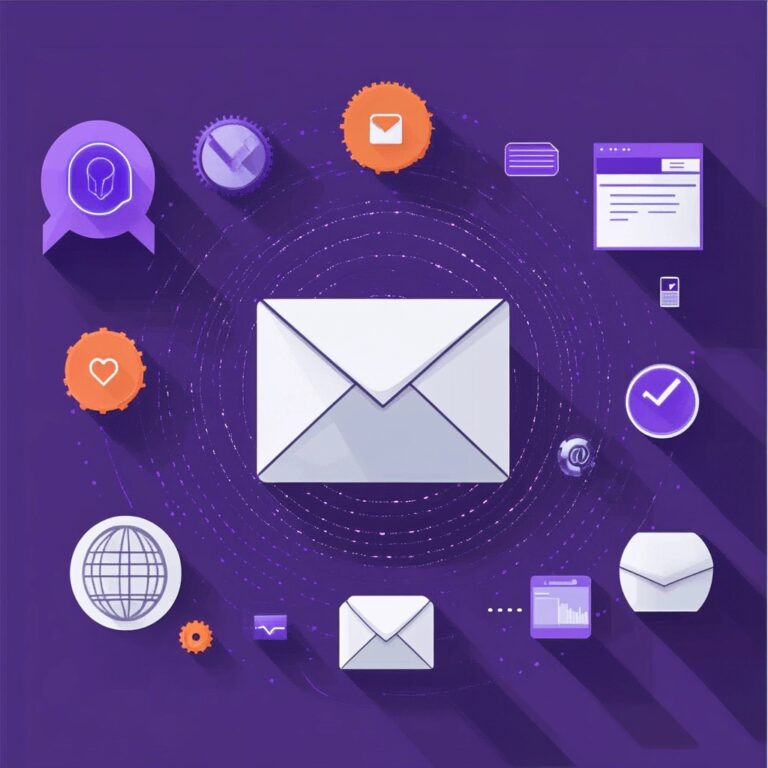How to Use Personas to Create Effective Sales Enablement Materials?

- 1. How to Use Personas to Create Effective Sales Enablement Materials?
- 2. Why do we Leverage Personas in Sales Enablement Materials?
- 3. Creating Visibility
- 4. Define Your Buyer Personas
- 5. Claire
- 6. Determine What Sales Enablement Materials Are the Best Fit
- 7. Goals, Desires, and Pain Points
- 8. Equip Your Sales Team with Targeted Sales Materials
- 9. Last Words
Do you know your customers personally? A simple question but, when grasped thoroughly, one that has the potential to flip the script on your sales agenda and process. Creating personas to understand the breadth of your consumer base is not a new concept. However, beyond their obvious merit to b2c marketing, personas can be leveraged within the b2b marketing realm to aid your brand’s sales team with effective materials.
How to Use Personas to Create Effective Sales Enablement Materials?
What do we mean by Sales Enablement?
Any form of messaging that aims to both inform and champion your product or service and thereby drive sales can be described as a sales enablement material. As stated, most companies produce this messaging for both internal and external use to activate their sales team and to vocalize directly to consumers. Examples of sales enablement materials include:
- B2C materials:
- Social media content
- Social copy
- Blog posts
- Case studies and testimonials
- Product reviews and post-sales materials
- B2B sales enablement materials to arm internal sales teams:
- Competitor Comparisons (typically presented as battle-cards)
- Sales scripts
- Product one-sheets
- Educational presentations
- Third-party industry research and data
These sales enablement tactics are the tools and resources that can equip your sales team on how best to sell your product. Think of these as the armor that your sales team put on before going into battle in the market place each day. They aim to educate your sales team into your product specifics, the buyer rewards, and the user satisfaction rating of your product.
Whether your sales team is an office of three in rural Ohio, or three thousand in Silicon Beach, their training and expertise in your product matters. Personas are the next step to elevate this training. According to ITSMA, 82% of companies nationwide already use a persona model in their b2b marketing model.
Why do we Leverage Personas in Sales Enablement Materials?
The purpose of identifying your unique buyer personas is to help you create a marketing strategy specifically tailored to each one. Thus, your unique personas will inform the basis of your strategic marketing positioning. For example, if your first persona is ‘Fran,’ an 80-year-old woman from the suburbs of Portland, your primary form of messaging is unlikely to be through an Instagram campaign.
Equally, ‘Caitlin,’ the 19-year-old persona from The Bronx is less likely to stumble upon your paid editorial campaign in Town and Country magazine.
Creating Visibility
Personas create a visual. They are the personification of a customer. They add flesh and bone to a series of data projections and create living breathing beings.
- Beings with habits.
- Beings with thought patterns.
- Beings with whom we can empathize and relate.
From a marketing perspective, this demand for empathy works to humanize the ad-world jargon that surrounds target demographics and consumer behavior. While customer data and analytics in their pure form are valuable, it is the creation of personas that allow both your marketing and sales department to add a flare of innovation and creativity to their campaigns. It is that “human” component that elevates strategic thinking to thoughtful, personalized, and pragmatic campaigns.
Define Your Buyer Personas
How to Build Your Personas?
The first step is to define your personas. Depending on your business type, aim to create at least three to five unique persona individuals. Each individual should represent a sub-segment of your core consumer base. The best way to get started is to conduct research into your audience to gain an accurate perspective of your target demographic. Listed below are tools that can help find your target demographic, and improve sales.
- Google Analytics—Utilize Google Analytics to discover insights about your brand’s reputation online. What countries or states generate most web traffic to your site? What are the core age and gender norms of your customers? Google has a wealth of data readily accessible at your fingertips, allowing you to fully engage yourself within your brand.
- Social Media Metrics—Similar to Google, the social media metrics of your business page gives an informative insight into the geographic, age and gender breakdown of your audience. This is a goldmine for small businesses. More so, it grants a thorough breakdown of user habits: When are the sweet spots for activity on your platform? What competitor brands do your customer base engage with? Which influencers or brand ambassadors are they listening to? Which platforms are driving clicks to your website and conversions to purchases? All the questions you have may be answered with this savvy technology.
- Ask Your Audience to Participate In a Survey—Present your mailing list recipients or website visitors with a simple CTA asking them to fill out a brief survey. Use your survey to target any withstanding questions or more specific research factors such as their profession, their hobbies, and habitual patterns (or their knowledge of competitor brands).
While quantitative research adds ballast and insight into your target demographics, it is qualitative research of your audience-base that provides a wealth of information useful to create your personas. Planting each persona geographically is vital since 82% of companies target their marketing campaigns according to a locality.
Enlisting a market research agency with professional marketers to conduct a thorough, detailed deep-dive into the user habits of your customers will give specific guidance for building the fine details of your personas. This is what takes your personas from the crude sketch of a numeric statistic to developing their human elements.
It gives them a face, a lifestyle and an identity.
Claire
Now, ‘Claire’ goes from being a number on a page to a student from Denver who enjoys motorbike racing and religiously attends folk-rock concerts. ‘Brian’ goes from being a dot on a graph to a grandfather in Reno who collects vintage Time magazines and is a keen member of his local Rotary Society. Your customers are what drive your business, whether you’re selling a product or providing a service. Let your customers become more than people you are selling to, and an added number to your data. Your personas have pasts and futures, which is what makes them so valuable in tracking customer behavior.
Determine What Sales Enablement Materials Are the Best Fit
Different types of messaging or sales materials will resonate stronger with different buyer personas. Research conducted by MECLABS offers some vital insight into the messaging preferences of different generations.
For example, where 24% of 18-30-year-olds respond positively to text messages from brands, only 6% of people over 65 would feel comfortable with a brand communicating via text. Comparatively, while only 30% of 18-30-year-olds would respond positively to postal mail from a brand, a significant 68% of 65 and overs say that they would. Listening to these insights allows your sales team to optimize each messaging platform and leverage them to communicate to your audience well.
Goals, Desires, and Pain Points
Once you’ve established your personas it is crucial to outline their needs and their frustrations. In doing so, you can position your product or service in a manner that speaks directly to their desires and craft a solution-orientated narrative around your brand.
- Pain Points—In order to understand what your audience perceives their need to be, you need to understand what they lack (or perceive to be lacking).
- Goals—Once a pain point is established, set a criterion that would hypothetically enable each of your personas to overcome their pain points and find a satisfactory solution.
- Desires—The outcome: Either the solution to the problem or the perceived antidote that your persona would wish to buy into to alleviate the pain point.
The aim is to create a unique message, tailored to each of your 3-5 personas, that specifically informs them how and why your product or service will benefit their lifestyle and alleviate their pain point.
Equip Your Sales Team with Targeted Sales Materials
Now that you have crafted your unique messaging angle and material placement, it is time to deploy these developed materials in the marketplace. The first step is to share your findings with your internal sales team. This is where b2b persona usage applies.
Create a presentation that gives an in-depth insight into each persona. Take time to build and explain each character, empowering your sales team to establish their own empathy and understanding towards each one. Follow this by teaching the various sales enablement tips that your research has granted you.
Last Words
Now the aforementioned b2b sales enablement materials come into the picture. Arming your sales team with specific one-pagers and sales scripts allow you to create a uniform angle and narrative across departments and territories that distinctly cater to your 3-5 personas. This meeting should produce a unanimous understanding of your unique messaging angles, and generate a synergy across your sales team as they go forth with a fresh and thorough understanding of each material.
Since your sales team will likely handle the day-to-day communication with potential and current customers, a concrete understanding of each persona will prove valuable to their communication style. No matter what department or messaging tactic that they employ, whether telecoms, social media or email lists, they will now be armed with a deeper, more humanized understanding of your audience.
Sources
https://www.marketingsherpa.com/article/chart/channels-preferred-by-age-groups – ‘Marketing Research Chart: Do difference age groups prefer different channels?’ sourced from Marketing Sherpa
https://www.itsma.com/whats-behind-the-customer-mask/ – ‘The Marketing Strategist: What’s behind the Customer Mask? Buyer Personas Reveal What Motivates your Customers to Buy’ sourced from ITSMA
https://s3.amazonaws.com/factual-content/marketing/downloads/LocationBasedMarketingReport_Factual.pdf – ‘2018 Location-Based Marketing Report’ sourced from Lawless Research
Our Editorial Standards
Reviewed for Accuracy
Every piece is fact-checked for precision.
Up-to-Date Research
We reflect the latest trends and insights.
Credible References
Backed by trusted industry sources.
Actionable & Insight-Driven
Strategic takeaways for real results.






